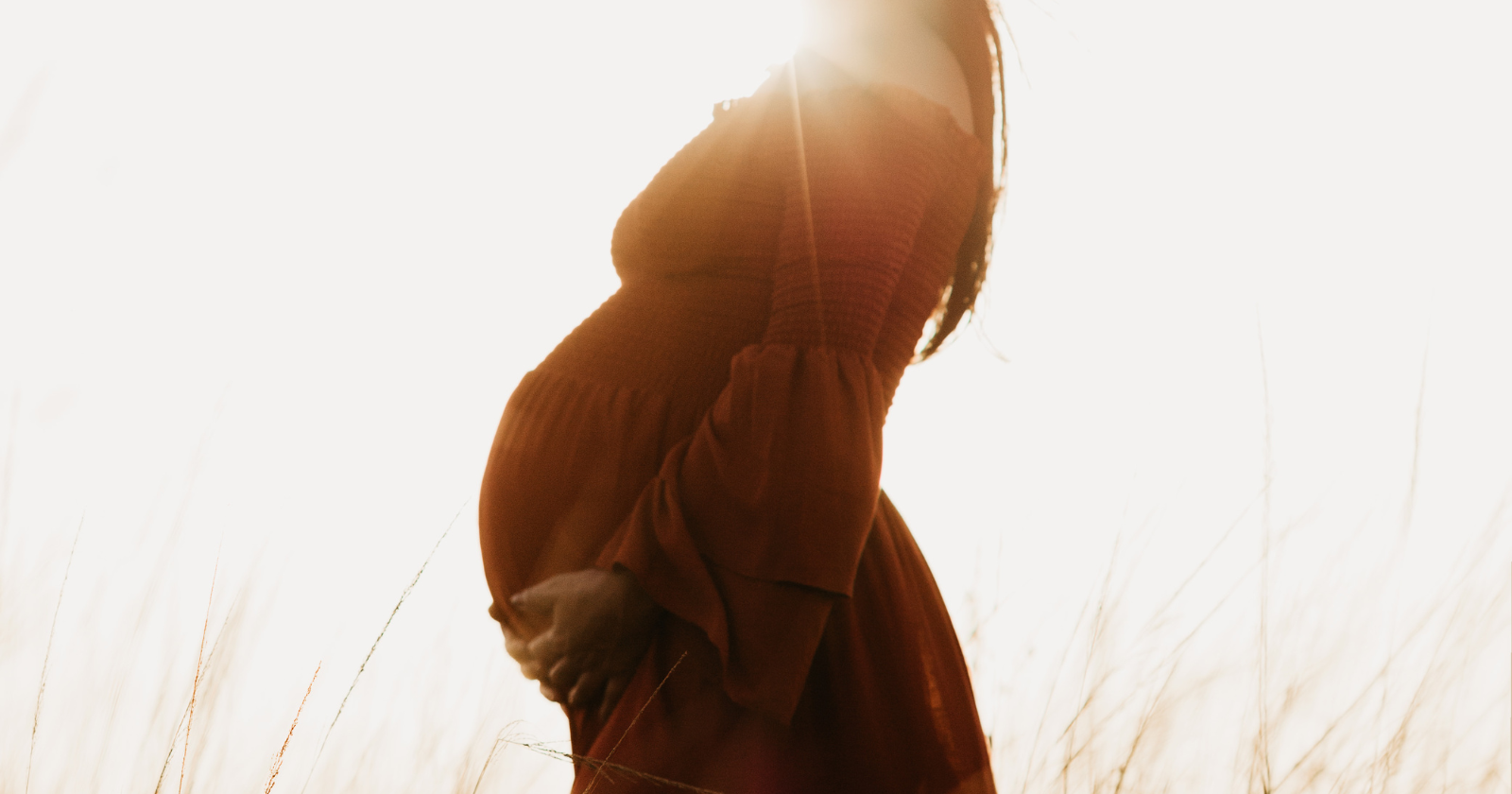“An embryo is an individual, no matter how small. While the embryo receives cells from the mother and the father, it is neither the mother nor the father.”
Evangelium Vitae, 1995
“The embryo is a new human life which is genetically distinct and which has energy and a direction of its own from the moment of conception.”
Save Our Nation, 2000
Have you ever paused to wonder where life truly begins?
In a world where science and faith often seem at odds, the question of life’s inception invites a fascinating exploration that bridges both realms.
The belief that life begins at conception bridges the realms of science and faith, marking a pivotal moment where human existence takes root.
By examining both scientific evidence and religious teachings, we uncover a compelling narrative about the inception of life.
That’s why I decided to meld these perspectives and offer insights into how life’s beginning at conception is understood through the lens of both science and scripture.
Understanding life and conception
Let’s dive into the heart of the matter: understanding life and conception.
At the very core, life is a marvel, a precious gift that begins its journey at a moment often unseen but immensely significant.
Conception isn’t just a biological event — it’s the starting line of a unique life, a point where faith and science converge to celebrate the inception of a new being.
This critical moment, when the sperm and egg unite, forms a zygote, embodying a new individual with its own genetic code. This fusion initiates a journey of development that, if uninterrupted, leads to the birth of a human being.
The process underscores the miraculous nature of life’s start, rooted in both scientific fact and spiritual belief.
It echoes the biblical recognition of life’s sanctity from its earliest stages. And this idea perfectly aligns with the view that every life is a divine creation, known by God even before birth.
Biblical foundations for life at conception
“It is I who bring both death and life.”
Deuteronomy 32:39
“Did not He who made me in the womb make him? And did not one fashion us in the womb?”
Job 31:15
1) God as the author of life
God is clearly identified as the creator of life in the Bible.
Scriptures from both the Old and New Testaments underscore that from the moment of conception, life is crafted by divine hands.
Deuteronomy 32:39, for example, quotes God saying, “It is I who bring both death and life,” highlighting His control over our very existence.
Psalm 139:13-16 expresses awe at God’s involvement from the earliest stages of life, “You knit me together in my mother’s womb…Your eyes saw my unformed body.”
These verses encourage us to view life at conception not just as a biological start but as the beginning of a life that God Himself has initiated.
Understanding this, we can appreciate each life as a unique creation directly from God.
2) Life in the womb
The Bible intricately details the sanctity of life right from the womb, emphasizing the belief that life begins at conception.
Genesis marks the beginning, where God commands man and woman to “be fruitful and multiply,” setting the foundation for the natural union and the creation of new life.
This divine ordinance showcases the importance of life in the womb, seen as a blessing from God, a sacred beginning of a unique human being.
Scriptures like Psalm 139:13-16 marvel at God’s craftsmanship in forming life in secret, acknowledging His intimate involvement from conception.
Similarly, narratives like Elizabeth’s joy upon Mary’s greeting in Luke 1:39-44 illustrate the recognition of life and its significance even before birth.
These biblical passages collectively highlight a profound respect for the unborn, viewing them as God’s creation, imbued with purpose and identity from the earliest stages of existence.
3) The preordained existence
“Before I formed you in the womb I knew you.”
Jeremiah 1:5
The concept of preordained existence is a powerful testament to the value of life before birth, beautifully captured in Jeremiah 1:5, where it is said, “Before I formed you in the womb I knew you.”
This passage underscores the belief that each life is known and destined by God even before conception.
It reveals a divine blueprint for every human being, suggesting that our lives have purpose and significance from the very outset.
This idea challenges us to recognize the profound sanctity and intentionality behind every existence.
It invites us to consider not just the biological beginnings of life, but its spiritual and predestined origins, affirming that every individual is part of a greater divine plan from the earliest moments of their formation.
4) Predestined existence, according to Paul
“But when he who had set me apart before I was born, and had called me through his grace”
Paul to the Galatians 1:15
Paul’s teachings add a compelling layer to the understanding of life’s sacred inception, suggesting a predestined existence that transcends our earthly beginnings.
Reflecting on texts like Galatians 1:15, where Paul acknowledges being set apart before birth, and Ephesians 1:3-4, where believers are chosen in Christ before the world’s foundation, we uncover a profound theological nuance.
These passages invite us to consider not just the biological start of life but a spiritual commencement that predates our physical existence.
This perspective challenges us to view life not merely as a sequence of biological events but as part of a divine blueprint, intricately woven into the fabric of eternity by God’s sovereign will.
Medical aspects of life in the womb
1) The union of gametes
When we talk about the start of life, it all begins with a remarkable event: the union of gametes.
Picture this: a single sperm from the father, carrying 23 chromosomes, meets an egg from the mother, also with 23 chromosomes.
This fusion creates a zygote, a one-celled embryo with a complete set of 46 chromosomes.
This isn’t just any cell — it’s the start of a new, unique human life.
Generally, the fertilization process, taking around 24 hours, sparks the potential for this tiny zygote to grow into a fully rational and cognizant person.
Each zygote is unparalleled, a one-of-a-kind individual that will never be replicated. This union marks the incredible journey of human life, right from conception.
2) From zygote to embryo
After conception, the zygote embarks on a rapid journey of cell division and transformation.
Initially, it divides every 12-20 hours, moving from a single cell to a 16-cell structure known as a morula.
By the third or fourth day post-fertilization, the morula transforms into a blastocyst, signaling the formation of two distinct cell types:
The embryoblast, which will develop into the embryo, and the trophoblast, destined to become the placenta.
This blastocyst then implants itself into the uterus’ lining, a critical step that occurs between the 7th and 10th day after fertilization.
This pre-embryonic period lays down the primary germ layers—ectoderm, mesoderm, and endoderm—each destined to form different organs of the human body.
By the end of the eighth week, a fully recognizable human embryo emerges, marking a significant milestone in the journey from conception to birth.
3) The embryonic period
The embryonic period is a phase of extraordinary change and development.
Starting from the fourth week after conception and lasting until the end of the eighth week, this period is when the embryo undergoes dramatic differentiation.
Cells that were once identical start to take on specific roles, forming the essential structures of the human body.
It’s a time when the blueprint of life really starts to take shape.
By the end of this period, the embryo isn’t just a cluster of cells anymore — it’s a fully recognizable human form, complete with the beginnings of all major organs.
Just think about it: in just a few weeks, life transitions from a single cell to a complex being, showcasing the incredible power and intricacy of human development.
4) The fetal period
Following the embryonic period, the fetal period begins in the ninth week and continues until birth.
This stage is characterized by rapid growth and further development of the body structures and organs that formed during the embryonic period.
It’s during the fetal period that the human being truly starts to take shape, growing in size and weight, and developing features that will be recognizable at birth.
Viability, the point at which the fetus can survive outside the womb, is a significant milestone during this period.
With advancements in neonatal care, babies born as early as 23-25 weeks gestation have a chance at survival, although challenges remain.
The journey through the fetal period is the final preparation for life outside the womb, culminating in the miracle of birth.
5) Modern medical imaging
Modern medical imaging has revolutionized our understanding of life in the womb.
Technologies like ultrasound have become invaluable tools, offering us glimpses into a world that was once shrouded in mystery.
From the early detection of the gestational sac to the heart’s first beats, these images provide concrete evidence of the developing life inside the uterus.
Imagine being able to see the formation of a human being, from a tiny zygote to a fully-formed baby, ready to enter the world.
This isn’t just about medical convenience — it’s a profound opportunity to connect with the unborn child, to witness the miracle of life as it unfolds.
Through the lens of medical imaging, we’re not just observing. We’re bearing witness to the incredible journey of human development from its very inception.
The journey from conception to birth
Now, let’s pause to consider the miraculous journey from conception to birth once again.
This extraordinary process begins with labor, a sequence of involuntary uterine contractions that gradually open the cervix, guiding the baby through the birth canal.
The climax of this journey, crowning, heralds the baby’s imminent arrival into the world.
The labor process is influenced by five crucial elements:
- The baby’s position
- The birth canal’s dimensions
- The strength and frequency of uterine contractions
- The placenta’s placement
- The mother’s psychological state.
Ideally, the baby aligns head-first in the birth canal, facilitating a smoother delivery.
However, challenges such as breech presentations may necessitate surgical intervention, like a Caesarean section.
Labor unfolds in three stages:
- The first involves cervical effacement and dilation, often marked by the “water breaking.”
- The second stage sees the baby’s descent and delivery, with progress measured by the baby’s position relative to the ischial spines.
- The final stage culminates with the placenta’s delivery.
Immediately after birth, the newborn receives urgent care to ensure a clear airway and stable condition, assessed by the APGAR score.
| Heart Rate | Respirations | Muscle Tone | Reflex | Color | |
|---|---|---|---|---|---|
| 0 | Absent | Absent | Limp | No response | Pale or Blue |
| 1 | Less than 100 | Slow | Some Flexion | Grimace | Feet Blue |
| 2 | Over 100 | Good cry | Active Motion | Cry | All pink |
This score evaluates the baby’s heart rate, respiration, muscle tone, reflex response, and skin color.
The moment the baby is gently placed in the parents’ arms, it sparks an indescribable joy, celebrating the culmination of a journey powered by love — a true marvel of life.
Final reflections
The miracle of life is an extraordinary phenomenon that has captivated humans since the dawn of time.
Life’s journey, starting with conception, unfolds as a profound narrative, intertwining science, faith, and personal experiences.
As we’ve explored throughout this article, from the formation of a unique DNA structure to the first flicker of a heartbeat, the evidence strongly suggests that life begins at conception.
Still, life at conception isn’t just about biological processes or religious teachings. It’s about recognizing and honoring the incredible journey that each life embarks on right from the very first moment.
As you reflect on these insights, consider the marvel that is life – its beginnings, its journey, and its endless possibilities.
The realization that every life starts at that very moment of conception is indeed a testament to the miraculous nature of our existence.









